The global cold chain packaging market is estimated to be valued at USD 38.51 Bn in 2025 and is expected to reach USD 134.08 Bn by 2032, growing at a compound annual growth rate (CAGR) of 19.5% from 2025 to 2032.
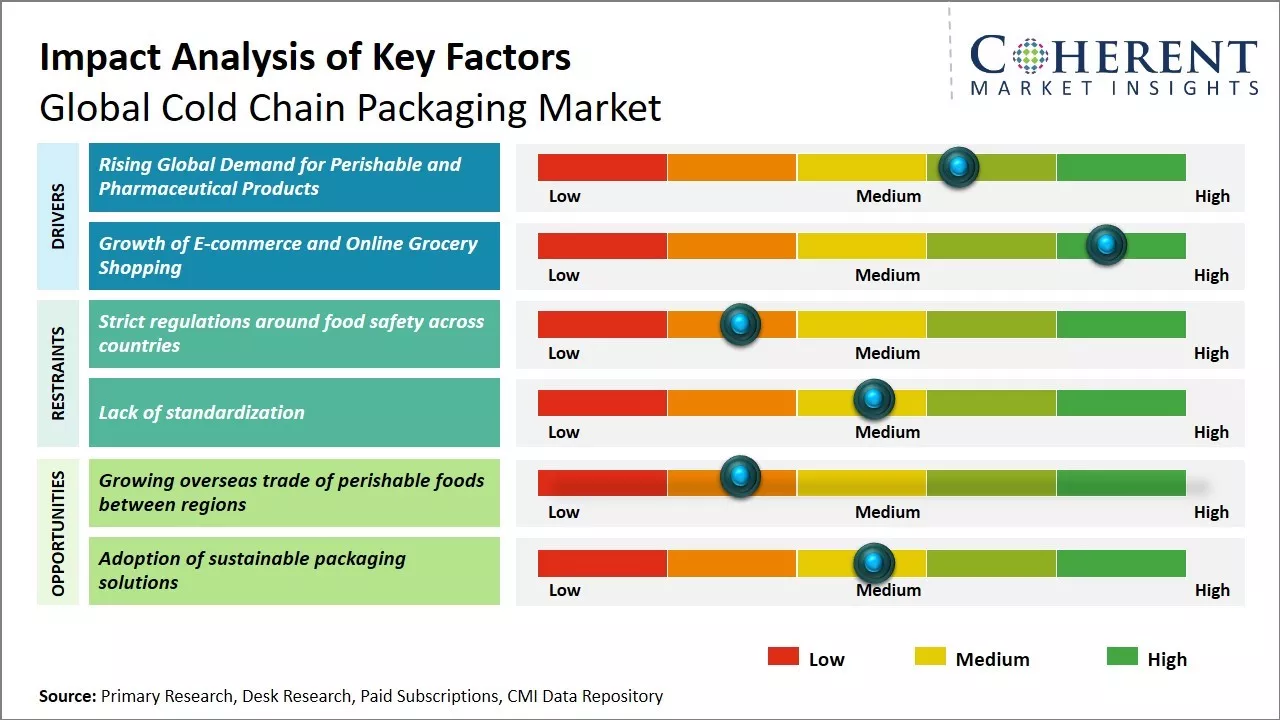
Discover market dynamics shaping the industry: Request sample copy
Over the past few years, the cold chain packaging industry has shown high growth owing to the increasing demand for perishable foods worldwide. Rising international trade of temperature-sensitive products like pharmaceuticals and increasing globalization of food supply chains has further propelled the demand for innovative cold chain packaging solutions. In addition, the growing last-mile delivery of food delivery and online grocery shopping has led packaging manufacturers to introduce smarter and active packaging materials with advanced insulation and tracking capabilities. Advancements in material science and automation are also expected to aid the development of intelligent packaging solutions for efficient cold chain transportation and storage over the forecast period.
Rising Global Demand for Perishable and Pharmaceutical Products
With increasing globalization of trade, there has been a tremendous rise in the transportation of perishable food items and temperature-sensitive pharmaceutical products across borders. This includes shipping of fruits, vegetables, dairy, meat, seafood, and other perishables from regions of production to other markets worldwide. Similarly, trade in biologics, vaccines, and other temperature-controlled drugs has seen high growth. Maintaining an unbroken cold chain from production to the end consumer has become critical for the quality and safety of these products. Even a small rise in temperature or exposure to warm conditions during transportation can lead to the spoilage of perishables or compromise the efficacy of pharmaceuticals. As worldwide trade in perishable agricultural commodities and pharmaceuticals expands to new geographies and demand centers, there is a parallel need for robust cold chain infrastructure and packaging solutions to protect these shipments across borders. The need for specialized insulated packaging, refrigerants, tracking systems, and other cold chain logistics is driving the growth of the cold chain packaging industry on a global scale.
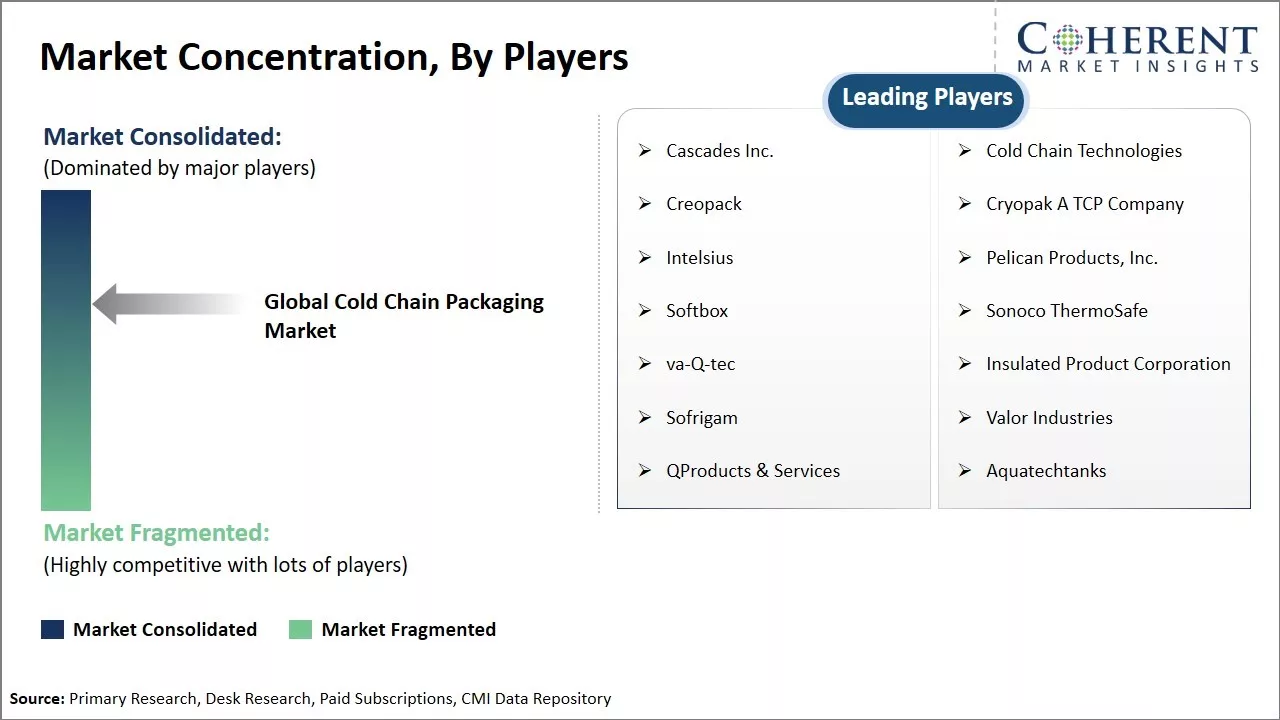
Get actionable strategies to beat competition: Request sample copy
Growth of E-commerce and Online Grocery ShoppingThe rapid digitization of economies and rising internet penetration worldwide have boosted the growth of e-commerce across all sectors including food and grocery. More consumers are opting to shop for their daily needs like foods, beverages, and packaged meals online through e-stores or hyperlocal apps and get these delivered to their homes. This has placed additional responsibility on retailers and logistics providers to maintain quality right from packing at processing/manufacturing facilities to the last mile delivery. Perishable items need to be packaged in protective solutions that can keep them fresh until they reach the end consumer. The growth of online grocery shopping and online food delivery business models has generated new demand for specialized insulated packaging products, temperature-controlled transportation, and tracking systems. Cold chain packaging manufacturers are developing innovative solutions to cater to the unique requirements of the fast growing e-grocery segment.
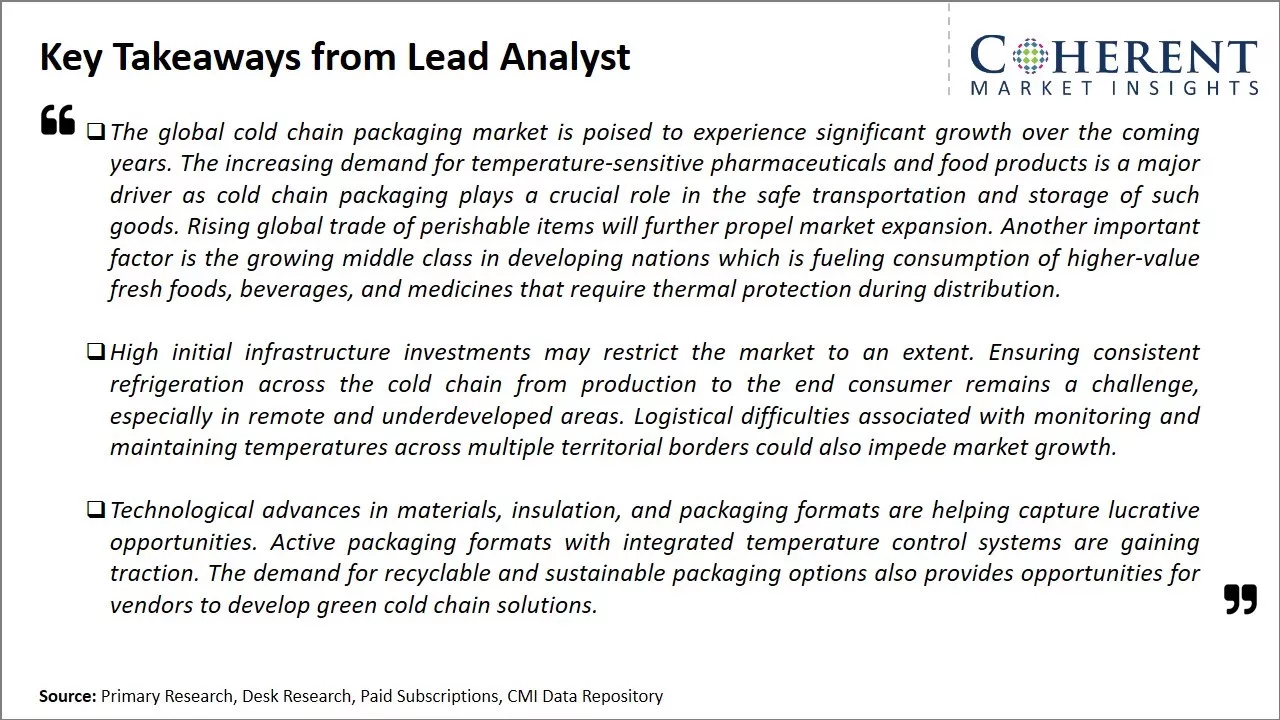
To learn more about this report, Request sample copy
Challenges: Strict regulations around food safety across countriesStrict regulations around food safety across countries are significantly restraining the growth of the Global Cold Chain Packaging Market. Governments are formulating and enforcing stringent norms and standards to ensure safe delivery of perishable foods from farm to fork. This involves maintaining an unbroken cold chain through the entire supply chain. Adhering to these regulations has become quite challenging for companies involved in the cold chain. They have to abide by diverse standards set by different countries and regions which demands specialized packaging design, labelling, traceability and temperature control technology. Managing global compliance under such a complex regulatory environment has increased operational costs substantially for the cold chain packaging manufacturers and logistics providers. They have to invest heavily in packaging innovations, digital tracking solutions, infrastructure upgrades and skilled workforce training. Sustainability has also become a key concern for regulators. Many countries now mandate provision of environmental impact data of packaging materials used and methods of disposal. This forces companies to switch to reusable or recyclable options made from renewable resources which attracts additional costs. For instance, according to the European Commission's data, over 50% of Germany's food waste could be avoided if proper cold chain infrastructure and packaging solutions were implemented during transport and storage. However, the lack of harmonized standards across borders continues to disrupt seamless flow of perishable goods in global trade.
Opportunities: Growing overseas trade of perishable foods between regions
Growing overseas trade of perishable foods between regions presents a significant opportunity for the global cold chain packaging market. As international trade barriers come down and Logistics networks improve globally, there is higher potential to transport temperature sensitive foods across longer distances while still maintaining the highest quality and freshness. According to data from UN Comtrade, the value of global exports of perishable food items has grown by over 20% between 2020-2022. Countries are increasingly sourcing perishable food products like fruits, vegetables, seafood and meat from different climatic regions of the world to ensure steady supply throughout the year. This is driving the need for specialized cold chain packaging solutions that can keep products chilled or frozen during multimodal transportation over land and sea. Solutions like coolants, gel packs, insulation materials, temperature monitoring devices and automated cold storage warehouses are being increasingly adopted to tackle unique challenges like detention times at ports and changing ambient conditions. Packaging manufacturers are formulating new designs of boxes, pallets and containers specifically optimized for maximum thermal insulation, strength and durability during extended transit periods. Use of smart technologies for real time temperature and location tracking is also growing.
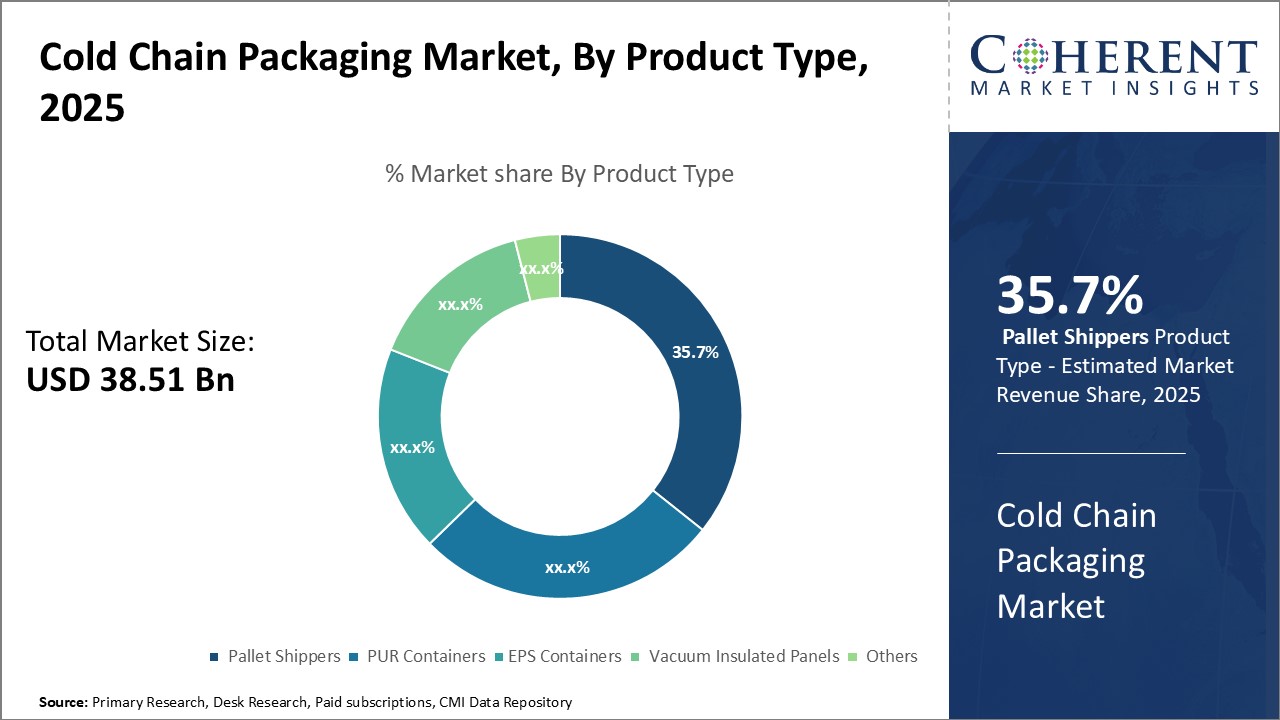
Discover high revenue pocket segments and roadmap to it: Request sample copy
Insights by Product Type: Pallet Shippers Dominate Due to Enhanced Product Protection and Ease of TransportationPallet shippers are expected to contribute 35.7% of the market share of the product type segment in the global cold chain packaging market in 2025. Pallet shippers provide unmatched protection for temperature-sensitive goods during shipping. Products are securely wrapped or boxed and securely placed on pallets that can be easily lifted and transported by forklifts. The industrial-strength construction of pallets prevents crushing that could occur from stacked packaging. Thermoformed plastic or cardboard shells with insulation fitting closely around products on the pallet create an unbroken temperature barrier. Pallet shippers are reliably able to maintain precise temperature conditions for months at a time whether keeping products frozen or chilled. Their large size allows for the packaging of full product cases or crates, eliminating the need for repackaging. This streamlines the supply chain for goods like meat, poultry, seafood, and baked items. Pallets can also be designed with ventilated or solid tops depending on specific cargo needs. Tracking is simplified with pallet shippers since the entire load travels as one unit. Their modular design supports multi-destination deliveries without unstacking at intermediate stops. For returns, empty pallets are conveniently collected and reused. With strengths in temperature control, packaging efficiency, and logistics handling, pallet shippers have remained the top choice for bulk transport of temperature-sensitive goods worldwide.
Insights by Application: Fish, Seafood and Meat Top Application Due to High Perishability
The fish, seafood, and meat segment is expected to contribute 34.7% of the market share among applications in the cold chain packaging industry in 2025. Products within this segment are highly perishable and require uninterrupted temperature control throughout the supply chain. Even brief exposure to inappropriate temperatures can lead to quality deterioration and waste for fresh and frozen seafood, poultry, and red meat. Cold chain packaging plays a vital role in maintaining safety and shelf life by keeping products at the precise temperatures needed from source to end consumer. Technological advancements have allowed cold chain providers to offer customized solutions for the unique needs of different meat cuts and seafood varieties. Materials with advanced insulation and automated cooling ensure products remain pristine whether transported domestically or internationally. Monitoring systems track temperature, humidity, impact, and other parameters to quickly identify any issues. This gives supply chain managers critical data to take corrective actions to avoid costly losses. With the growing worldwide demand for protein and consumers increasingly seeking fresh, minimally processed options, investments will continue in cold chain solutions for the high-value fish, seafood, and meat segment.
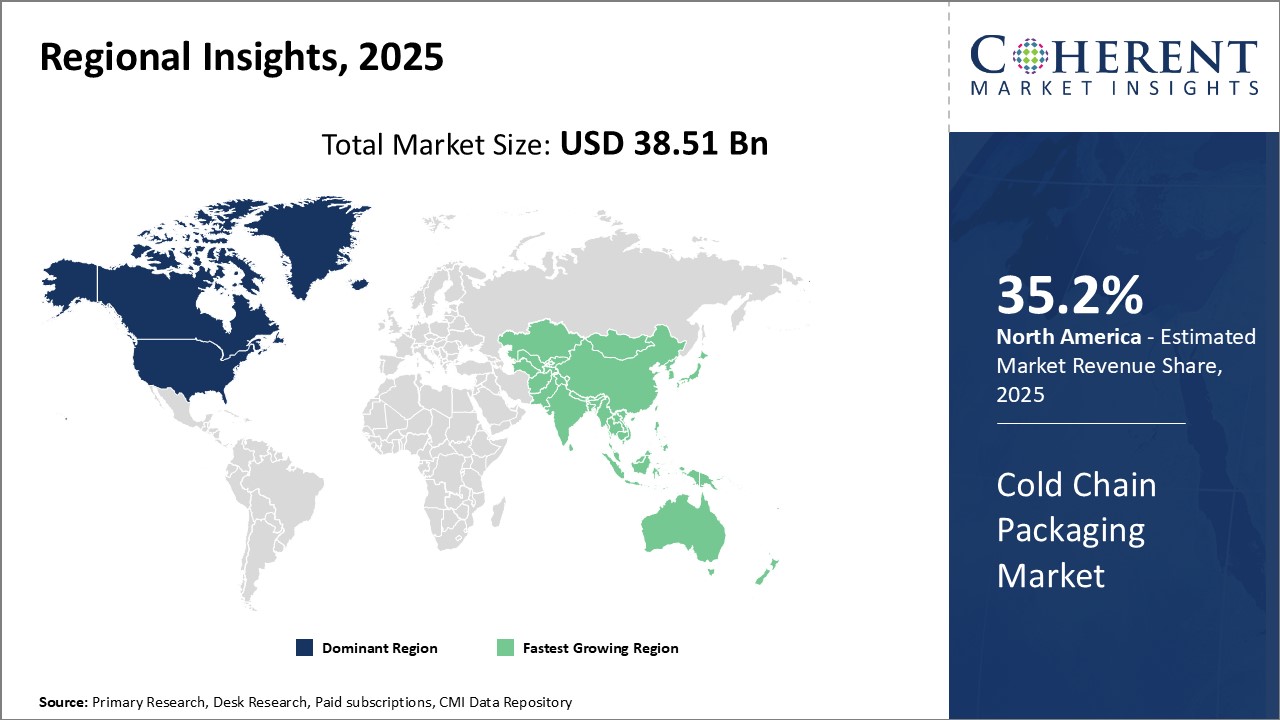
Need a Different Region or Segment? Customize now
The North America region currently dominates the global cold chain packaging market owing to a strong presence of major companies in countries like he U.S. and Canada. The market in this region is expected to account for 35.2% of the market share in 2025. With the rising demand for perishable foods and pharmaceutical products, the need for efficient cold chain systems is growing rapidly across countries in the region. North America is one of the leading producers and consumers of temperature sensitive products worldwide. Stringent food safety regulations along with advanced cold storage infrastructure has accelerated the use of temperature controlled packaging over the past decade. Some of the key players from North America are successfully exporting their cold chain solutions to international markets, which is another factor that is strengthening the region’s control over the industry. Moreover, trade agreements like NAFTA have promoted the sharing of cold chain best practices among Canada, the U.S., and Mexico, driving higher adoption of specialized packaging designs and temperature monitoring technologies.
The Asia Pacific region is witnessing remarkable growth and emerging as the fastest growing market for cold chain packaging. Developing economies like India and China have witnessed tremendous surge in their consumer goods industry which has increased the need for maintaining cold temperature control during storage and shipping of perishables. Growing middle class, rapid urbanization, and changing dietary patterns are spurring the demand for temperature sensitive pharmaceuticals, dairy, seafood, and other perishable foods in Asia Pacific. This has fuelled investments by both international as well as regional players to expand their presence through setting up production facilities, enhancing warehousing capacities and expanding distribution coverage across the region. Sensing opportunities, several global firms have entered strategic partnerships with local Asian players to provide complete supply chain solutions tailored for the diverse Asia Pacific markets. Rising export oriented businesses are also contributing to the growth of cold chain packaging industry in the Asia Pacific region.
Cold Chain Packaging Market Report Coverage
| Report Coverage | Details | ||
|---|---|---|---|
| Base Year: | 2024 | Market Size in 2025: | USD 38.51 Bn |
| Historical Data for: | 2020 To 2024 | Forecast Period: | 2025 To 2032 |
| Forecast Period 2025 to 2032 CAGR: | 19.5% | 2032 Value Projection: | USD 134.08 Bn |
| Geographies covered: |
|
||
| Segments covered: |
|
||
| Companies covered: |
Cascades Inc., Cold Chain Technologies, Creopack, Cryopak A TCP Company, Intelsius, Pelican Products, Inc., Softbox, Sonoco ThermoSafe, va-Q-tec, Insulated Product Corporation, Sofrigam , Valor Industries, QProducts & Services, and Aquatechtanks |
||
| Growth Drivers: |
|
||
| Restraints & Challenges: |
|
||
Uncover macros and micros vetted on 75+ parameters: Get instant access to report
*Definition: The global cold chain packaging market refers to the market for packaging solutions used in cold chain logistics and storage. Cold chain packaging products are designed to maintain proper temperatures throughout transit and storage in order to preserve the quality and freshness of temperature-sensitive goods like foods, pharmaceuticals, chemicals, and others. They include insulated containers, refrigerants, temperature monitoring devices, and other accessories that ensure products are kept within safe temperature ranges to protect them from damage or decay during transport and warehouse storage.
Share
Share
About Author
Kalpesh Gharte is a senior consultant with approximately 5 years of experience in the consulting industry. Kalpesh holds an MBA in Operations and Marketing Management, providing him with a strong foundation in market strategy and analysis. He has contributed to various consulting and syndicated reports, delivering valuable insights that support informed business decisions
Missing comfort of reading report in your local language? Find your preferred language :
Transform your Strategy with Exclusive Trending Reports :
Frequently Asked Questions
Joining thousands of companies around the world committed to making the Excellent Business Solutions.
View All Our Clients
US Reciprocal Tax Impact Analysis On Cold Chain Packaging Market
Stay updated on tariff changes with expert insights and timely information